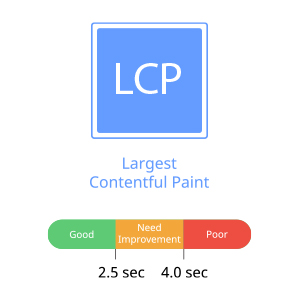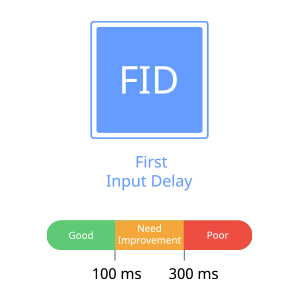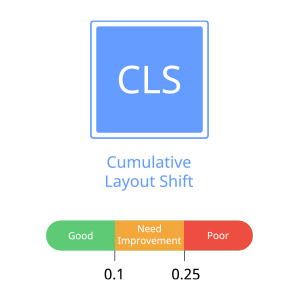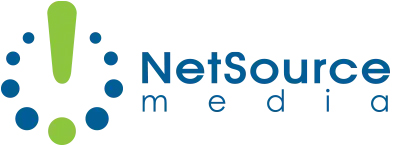Previously, Google updates usually focused on things like keywords, content and linking. In the summer of 2021, things changed. Along came Core Web Vitals, a set of three important ranking signals based on how webpages respond to users. Former SEO strategies alone will not be enough to hold your Google ranking when paired next to your competition. In fact, your website could lose ranking over time if page experience is not on par to Google’s new standards. Content is still king, however, websites need to deliver quick and responsive webpages. If not, Google search (and most users) will pass you by for better optimized websites.
What are Core Web Vitals?
As mentioned, Google uses how your webpages are perceived to the user as a ranking factor. Core Web Vitals is how Google measures a website’s speed, stability, and responsiveness. This is calculated through the combined scores of the Largest Contentful Paint (LCP), First Input Delay (FID), and Cumulative Layout Shift (CLS). Each of the three scores are independent of the other and averaged over time. Because these Web Vitals are not fixed, they can be improved with making technical changes to your website.
Google Ranking and SEO Factors
With so many changes in SEO over the years, is updating for Google Core Web Vitals a necessity? Google has made it clear that its latest page experience update is not going anywhere. In fact, Web Vitals is something Google will be continuously updating each year. Additionally, various industries have seen positive gains in page rank when focusing on their Web Vitals.
Core Web Vitals is not just an SEO trick to turn on or off. In contrast, they are research proven guidelines that make your webpages more attractive and effective to your online visitors. When your webpages are optimized, everyone wins! User engagement increases, Google ranking improves, and you gain leads and revenue through your website. As a result, many businesses who improve Web Vitals benefit from higher conversion rates, lower bounce rates, and increased revenue. To think by simply editing images, code, or text on your website could directly result in a 42% increase of revenue seems unreal. However, when you take a moment to see how page experience directly ties to the satisfaction of users on your website, then it’s very believable.

Largest Contentful Paint (LCP)
Load Speed of Largest Viewable Item
Good Score is 2.5 seconds or less.
Largest Contentful Paint (LCP) measures loading performance which is based on the time it takes for the largest page element to fully display on your screen. LCP doesn’t calculate the loading speed of the entire page, just the biggest content piece. The largest blocks of content are usually header images, logos, or video. It’s important to make an impact with your central website image or content right away.
For example, when visiting a website, it’s never fun to just see a product description quickly, but then stare at a blank image block due to lag. That is if you wait long enough for it, as bounce rates increase 32% when a user waits from 1 to 3 seconds on page loading. Conversely, Vodafone improved its LCP by 31% which resulted in 8% more sales! The lesson is to not keep your customers waiting on seeing your central content visually.
First Input Delay (FID)
Reaction Time To User’s First Interaction
Good Score is 100 milliseconds or less.
How quickly a webpage responds to the first user interaction is what First Input Delay (FID) measures. If you want to see online visitors engage with your content, then your webpages must react in a timely manner to a user’s interaction.

For users, nothing says your website is broken more than clicking an image, link, or form and seeing it lag or fail loading. One thing that is helpful in preventing these hang ups with FID is to reduce code clutter. Code clutter could be background scripts or feeds that communicate with third-party sources.

Cumulative Layout Shift (CLS)
Position Changes When Loading.
Good Score is 0.1 or lower.
This measurement is more complex to calculate, however, very easy to understand. Cumulative Layout Shift (CLS) is based on the unexpected movement or “shifts” of the visible webpage elements that were not user initiated.
The classic example of this is when you mean to click a button, and then suddenly text or an image replaces the area the button once was located. These shifts are extremely frustrating for users. Bad CLS makes your website unpredictable, and in the extreme cases, unusable. As Yahoo! Japan News discovered, by improving their CLS by 0.2, gave them 15% in increased page views for every session.
Page Experience at the Center
In both web design and SEO, you should always think of what the user is looking for in your content through informative text and relevant visuals. Additionally, thought has to be put into how webpage loads and responds to the user. At the end of the day, websites are for people and not machines. Consequently, this is why Google has been increasing importance of page experience as a ranking factor. Optimized Core Web Vitals will give you a competitive edge in the growing internet marketplace. As a result, you’ll be one step ahead in your SEO strategy through user responsive webpages.

